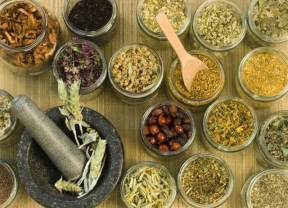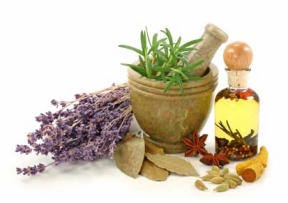
Natural healing—the art of curandero or curanderismo (taken from the Spanish word “curar,” or to cure)—isn’t necessarily a thing of the past. Many Latinos continue to drink teas of barks and berries for internal ailments, use plant leaves and roots for external injuries, and take part in healing rituals to rid the soul of dangerous spirits. The medical community has often been skeptical about folk healing. However, recent studies have begun to show a scientific basis behind many traditional curandero practices. Below is a few popular ingredients in natural Latino medicine.
Garlic (Ajo)
Garlic has traditionally been used in Latino curandero practices to protect the soul from enemies, negative energy and lurking evil. It’s common to see cloves of garlic hung over doorways in Latino households, eaten raw for protection from internal and external ailments and even burned regularly in homes to keep negative spirits away. Modern medicine seems to back up the idea that garlic can be a fierce protector of our health. Several large-scale studies have proven that the herb is an effective cure for several conditions linked to the blood system and heart, including atherosclerosis (the hardening of the arteries), high cholesterol, heart attack and hypertension.

Eucalyptus (Eucalyptol)
Latino folk healers have generally used the dried leaves and oil from the Eucalyptol tree mostly for respiratory ailments. The plant is used in order to loosen coughs and decrease the symptoms of colds, fevers and even asthma, and is also thought to naturally boost immunity. The plant is shown to reduce both the pain and swelling of mucous membranes in the respiratory tract. When used topically, eucalyptus oil is proved to decrease swelling from joint pain, genital herpes and acne, and also is a powerful insect repellant. In dentistry, the plant’s oil is used as a sealer and solvent for root canal fillings because of its antibacterial qualities.

Quinine (Cinchona)
As far back as the 1600s, native Peruvians used the bark of the cinchona tree, the only natural source for quinine, as a potent treatment for malaria. The tree was then brought to Europe by the Jesuits and was considered up until the mid-1940s as the most effective preventative treatment and cure for the disease. Quinine is a true example of how allopathic medicine—or traditional, pharmaceutical-based Western medicine—can benefit from the art of natural healing. A synthetic version of the plant is now available with a prescription as well as over the counter in most U.S. pharmacies for a wide range of ailments. Quinine is used to treat lupus and arthritis, and it still remains a treatment for malaria, especially in the developing world due to its low cost. It also is frequently prescribed as an off-label cure for nocturnal leg cramps.









